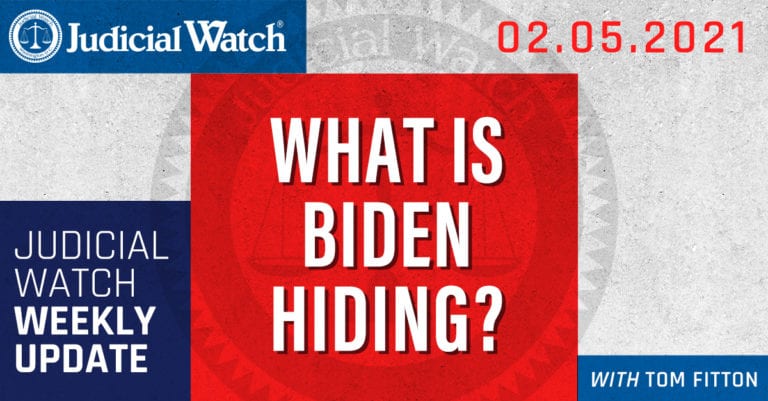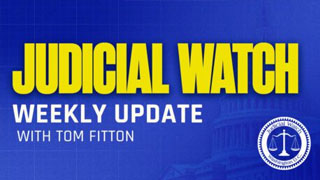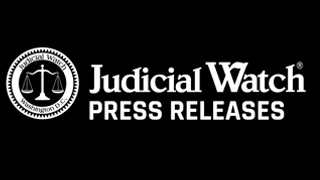

What is Biden Hiding?


Judicial Watch Sues for Solyndra Records of Biden’s Chief of Staff
Judicial Watch Continues Fight to Open Biden’s Hidden Senate Records
Energy Department Leaves Nuclear Labs Vulnerable to Former Employees
Mystery in Mena: The Death of a Patriot
Judicial Watch Sues for Solyndra Records of Biden’s Chief of Staff
Solyndra is one of the worst scandals of the Obama era – and Ron Klain, President Biden’s chief of staff, is right in the middle of it. The issue is fresh again given the new administration’s plans to fund more Solyndra-type companies with countless tax dollars.
Solyndra is the solar power company that accepted a loan of half a billion of your taxpayer dollars that were most lost. An Energy Department investigation found that “the actions of certain Solyndra officials were, at best, reckless and irresponsible or, at worst, an orchestrated effort to knowingly and intentionally deceive and mislead the Department.”
In December 2011, we filed separate FOIA lawsuits against the Obama Department of Energy and the Office of Management and Budget to obtain records regarding the taxpayer funded government loan provided to Solyndra.
We have now filed a FOIA suit against the Office of Management and Budget and the U.S. Department of Energy to obtain records of communications between Klain, who is now President Biden’s chief of staff, and the agencies about Solyndra (Judicial Watch v. Office of Management and Budget et al. (No. 1:21-cv-00303)).
We sued after the agencies failed to respond to December 2020 FOIA requests seeking “communications between Klain and any official of the Office of Management and Budget/Department of Energy regarding the solar company Solyndra.” We requested records from January 20, 2009, to January 1, 2011, when Klain was chief of staff to then-Vice President Biden.
In 2011, internal emails reportedly uncovered by investigators for the House Energy and Commerce Committee show the Obama administration was monitoring the progress of the $535 million taxpayer loan, “even as analysts were voicing serious concerns about the risk involved.”
“This deal is NOT ready for prime time,” one White House budget analyst wrote in a March 10, 2009 email, nine days before the administration formally announced the loan.
“If you guys think this is a bad idea, I need to unwind the W[est] W[ing] QUICKLY,” wrote Ronald A. Klain, who was chief of staff to Vice President Joe Biden, in another email sent March 7, 2009. The “West Wing” is the portion of the White House complex that holds the offices of the president and his top staffers.
White House energy adviser Heather Zichal reportedly e-mailed a warning to Klain, Obama aide Valerie Jarrett and Communications Director Dan Pfeiffer: “Here’s the deal: Solyndra is going to announce they are laying off 200 of their 1,200 workers. No es bueno.”
Klain was instrumental in getting President Obama to visit Solyndra. He reportedly wrote to Jarrett:
Sounds like there are some risk factors here, but that’s true of any innovative company POTUS would visit. It looks OK to me. … The reality is that if POTUS visited 10 such places over the next 10 months, probably a few will be belly-up by election day 2012—but that to me is the reality of saying we want to help promote cutting-edge, new-economy industries.
Solyndra later went bankrupt.
Obama and his misdeed continue to haunt the Oval Office.
Judicial Watch Continues Fight to Open Biden’s Hidden Senate Records
What was Joe Biden doing as a senator that he now wants to keep secret? We’re trying to find out.
We filed a notice of appeal with the Supreme Court of Delaware, asking for access to records about President Joe Biden’s senatorial records held by the University of Delaware. Biden’s papers include more than 1,850 boxes of archival records from his senate career.
This appeal seeks a reversal of the opinion of the Superior Court of Delaware, which is blocking a state Freedom of Information Act (FOIA) request. It comes in the lawsuit we filed with the Daily Caller News Foundation after a Delaware Attorney General’s opinion denied access to the records (Daily Caller News Foundation v. University of Delaware (No. N20A-07-001)). The Delaware FOIA lawsuit was filed in the Superior Court of the State of Delaware on July 2, 2020.
The appeal challenges the Superior Court of Delaware’s January 4, 2021, ruling upholding the Delaware state attorney general’s opinion that the records are not “public records” because, the opinion concludes without evidence, no public funds are used to support the Biden records project at the University of Delaware.
We responded in court that it is impossible for the housing of Biden’s senatorial records in the University of Delaware’s Library to not be supported by any public funds. We noted that the University admitted that “[t]he State of Delaware provides the University with approximately $120 million each year through an appropriation in the state budget,” but has yet to show how public funds are not used to support the papers.
We further pointed out that “archival storage space and professional staff members’ time are things of value that it can be inferred are paid for with public funds,” and we note that the requests even listed the “University personnel who maintain the Senatorial Papers whose salaries, it can be inferred, are paid with State funds.” W requested that the Superior Court order the University to search for and produce the requested records.
“We have no idea why the University of Delaware is hiding these materials that the public should have every right to see and we are grateful for Judicial Watch and our local counsel for pushing this case hard. When people ask why our institutions are no longer trusted they should look up this case,” said Daily Caller News Foundation President Neil Patel.
We filed our FOIA lawsuit after the University denied its April 30, 2020, request for:
- All records regarding the proposed release of the records pertaining to former Vice President Joe Biden’s tenure as a Senator that have been housed at the University of Delaware Library since 2012. This request includes all related records of communication between the University of Delaware and any other records created pertaining to any meeting of the Board of Trustees during which the proposed release of the records was discussed.
- All records of communication between any representative of the University of Delaware and former Vice President Biden or any other individual acting on his behalf between January 1, 2018 and the present.
On April 30, the Daily Caller News Foundation submitted its FOIA request to the University for:
- All agreements concerning the storage of more than 1,850 boxes of archival records and 415 gigabytes of electronic records from Joe Biden’s senate career from 1973 through 2009.
- Communications between the staff of the University of Delaware Library and Joe Biden or his senatorial, vice-presidential or political campaign staff, or for anyone representing any of those entities between 2010 [April 30,2020] about Joe Biden’s senate records.
- Any logs or sign-in sheets recording any individuals who have visited the special-collections department where records from Joe Biden’s senate career are stored between 2010 to the date of this request.
- All records from Joe Biden’s Senate career that have been submitted to the University of Delaware Library.
We and the Daily Caller News Foundation are being represented by Delaware lawyers Ted Kittila and Bill Green of Halloran Farkas + Kittila LLP.
There is significant public interest in the special deal between Joe Biden and the University of Delaware that is keeping Biden’s Senate records completely secret. Delaware law is explicit in requiring state entities, including the University of Delaware, to provide public access to these records. We won’t let this drop.
Energy Department Leaves Nuclear Labs Vulnerable to Former Employees
Given what we know about China’s wholesale theft of American secrets, it is discomforting to learn how casual our government is about nuclear security – particularly in its lackadaisical control of credentials granting continued access to former employees and contractors. Our Corruption Chronicles blog has the disturbing details.
The government agency that oversees the nation’s nuclear laboratories and the highly classified material they house often does not revoke the security clearance of employees and contractors after they leave, potentially compromising national security. The failure involves the Department of Energy (DOE), which issues the authorization via Personal Identity Verification (PIV) cards that serve as entry badges indicating the level of access to classified matter or special nuclear material. PIV cards also allow employees to enter, occupy or leave DOE sites and facilities.
During a three-year period more than 10,000 federal and contract workers left the DOE through retirement, resignation, removal, or death, according to a recently released DOE Inspector General report. Among them were thousands of individuals with security clearances and an alarmingly high percentage of their PIVs were not properly cancelled. In thousands of other cases the names of separated federal and contract workers did not even match records in the government database. “If clearances and PIV cards are not properly terminated, recovered, and destroyed, former employees may gain unauthorized access to department buildings or information,” the DOE watchdog writes in the lengthy document. “This risk has been demonstrated by incidents at the Department and other federal agencies in which former employees have accessed facilities or systems using unrecovered badges.”
Investigators examined records for 2,703 separated DOE employees and contractors at the agency headquarters in Washington D.C. and a field office in Albuquerque, New Mexico. They found that 66% of former employees’ PIV cards not marked as “destroyed” in the government database known as USAccess were not retrieved and manually eliminated per destruction records reviewed. Nearly 40% of departed workers’ PIV cards or employment statuses had not been updated in USAccess to reflect that the person was gone and no longer required access to DOE facilities and systems. In 30% of the cases, the former DOE and contractor employees’ security clearances were not terminated in accordance with agency requirements. “We noticed that several Headquarters Federal and contractor employees remained active in USAccess for months and even years after separation,” the report states. “For example, one employee that separated in November 2015 remained active in USAccess when we reviewed the database in July 2018, over 2 years later. Further, some of these employees were identified as having been removed from their jobs and others were deceased.”
During the audit, a DOE official told investigators that he witnessed a former employee at the agency headquarters enter the building and access his former workspace in a restricted area. The former staffer’s PIV card had not been recovered and his status in USAccess had not been updated, as required. The report offers a separate example at another federal agency in which a terminated employee repeatedly used administrator credentials to log onto government servers and make unauthorized changes to the agency’s website, including disabling a portion of the site. “To mitigate the risk of unauthorized access, the Department needs to take actions to ensure that it terminates security clearances and PIV card access for separated Federal and contractor employees in a timely manner,” the watchdog writes.
This is especially important considering the Department of Energy oversees the nation’s nuclear laboratories, which have long been plagued by embarrassing security breaches. The last thing they need is a disgruntled former employee with access to the facility. Judicial Watch has reported on the problem extensively and helped expose a disturbing scheme back in 1999 involving a Chinese Communist scientist (Wen Ho Lee) who stole nuclear secrets from the Los Alamos National Laboratory in New Mexico. Lee was not prosecuted by the Clinton Justice Department because then Attorney General Janet Reno claimed the accusations were racist. Judicial Watch represented the whistleblower, Notra Trulock, responsible for launching an investigation into Lee’s actions.
A multitude of scandals have rocked Los Alamos, the nation’s key nuclear weapons research facility, since then. A Los Alamos scientist and his wife, both contractors at the facility, stole classified restricted data involving nuclear weapons and passed it along to a foreign government that is hostile to the U.S. Before that, Los Alamos officials sent top secret data relating to nuclear weapons via an open electronic mail network and police accidentally stumbled upon it in a drug dealer’s mobile home during a drug bust. In 2017 the lab mistakenly shipped radioactive material on a commercial cargo plane. A few years later an epidemic of theft, fraud and security lapses led the DOE to label it a “systematic management failure.” The problem is not limited to Los Alamos. The nation’s other government-owned nuclear labs (there are 17) have also experienced decades of faulty management, weak security, and lousy oversight.
Mystery in Mena: The Death of a Patriot
Many well-known controversies have largely unknown characters and investigators who, though important, are sometimes lost to history. Such is the case with a story researched by Micah Morrison, our chief investigative reporter, who was sent to Arkansas years ago by The Wall Street Journal to look into suspicions about an otherwise forgettable airfield. A key local investigator of the goings-on in Mena recently passed away, and Morrison recalls his memory in his Investigative Bulletin.
I first met Russell Welch at a cheap motel on the outskirts of Mena, Arkansas, in the summer of 1994. It was a searing hot day and I had left the door open for some air and I heard a car slowly drive across the gravel and stop. I looked up and Russell’s gaunt shadow crossed the doorway.
He was no one’s idea of an Arkansas State Police investigator. Lean, with long brown hair and a handlebar mustache, soft-spoken, his face ravaged by anthrax that almost killed him in 1991, Russell had found himself on a case he never wanted and in the middle of a storm. The case was the investigation of drug smuggler Barry Seal and his activities at remote Mena Airfield in western Arkansas. The storm was Seal’s connections, real and imagined, to a network of government officials and their enablers, including the then-president of the United States, Bill Clinton.
Wall Street Journal editor Robert L. Bartley had sent me to Mena to figure out what was going on. CBS had been there before me. A legion of journalists and con men and grifters and government investigators would follow.
The Mena story is part of the cultural conspiracy landscape now. You can read about Judicial Watch’s latest investigation here, and find more background on the case here. Or you can watch the movie starring Tom Cruise. Or the other movie starring Dennis Hopper.
Russell believed that the conspiracy mischief that engulfed Mena was mainly due to Terry Reed’s book, “Compromised: Clinton, Bush, and the CIA.” It spins a vast, largely fictional tale about a drugs-for-money-for-guns conspiracy involving Bill Clinton, George H.W. Bush, infamous CIA operatives, Arkansas associates of the Clintons, Oliver North, Seal, Reed himself, Reagan Administration figures, the FBI, the Justice Department, members of Congress, criminals, Contras, cocaine cowboys, and a partridge in a pear tree.
But as Bartley recognized, most conspiracy theories contain a grain of truth, maybe even a few grains of truth. So he sent me down to Arkansas to look for it.
Russell Welch was not fooled. “From the very beginning, I have said that Reed was making stuff up,” Russell wrote me last year. “He was lying about Mena.” Russell had the details and the evidence on Reed.
Russell was the best kind of investigator—one who hates lies and is stubborn about the truth. He played by the book. It got him into trouble.
As the Arkansas State Police investigator based in Mena and tasked with monitoring Mena Airfield, Russell was assigned the Seal case around 1985, about the time one of Seal’s confederates was killed in a nearby plane crash. He quickly discovered that Seal had set up shop in Mena and was using the remote airfield as part of a smuggling network running cocaine from Colombia.
He also discovered that the Drug Enforcement Agency was already on to Seal. Seal had flipped and was cooperating with federal authorities.
Separately at Mena, and unconnected to Seal, other federal entities were running training exercises in the Ouachita Mountains and servicing aircraft used on clandestine missions at Mena Airfield. Judicial Watch disclosed last year that two of the federal entities were the CIA and the Defense Department.
“I did not want to investigate the Seal [case],” Russell wrote me. “I knew it was out of my league and the DEA should do the investigation.” But he was ordered to open a criminal investigation into Seal’s drug smuggling and money laundering.
“I started the criminal investigation,” Russell wrote. “I conducted it like any other investigation. I found that Seal had been [secretly] indicted in two different jurisdictions in Florida. He became a snitch for DEA Group 7 in Miami. His [immunity] period started in March of 1984. I knew that I had to keep my investigation focused on events prior to that. Anything that Seal…did after that date could have been part of a legitimate [DEA] investigation.”
Partnering with an IRS investigator, Bill Duncan, Russell compiled significant evidence of Seal’s drug smuggling and money laundering. “I did everything by the book,” Russell wrote. “When I finished the bulk of my investigation, there were no conspiracy theories floating around, yet. That started with Terry Reed.”
But the case developed by Russell and Bill Duncan went nowhere, killed by federal stonewalling and foot-dragging. A sinister conspiracy? Or something more mundane, like turf wars over witnesses and evidence? It was never entirely clear. But Russell and Bill persisted, and their careers suffered.
In 1986, Seal was murdered in Baton Rouge by Colombian gunmen. Later that year, a C-130 linked to Seal was shot down over Nicaragua with a load of guns for the Contra rebels, dragging a Mena interface into the Iran-Contra affair. In 1994, “Compromised” began to circulate, dragging the Clinton White House into the conspiracy.
Russell retired in 1996, but he never escaped the story. He was pursued by journalists, detectives, TV and documentary producers, authors promising book deals, conspiracy theorists, mooks, kooks, and menacers. For the most part, he kept silent, but he continued to work the case, taking notes, compiling evidence, documenting lies and discrepancies. He died in October, with his wife and his two sons at his side. He was 72. Let the record reflect that in addition to being a devoted husband and father and grandfather, Russell Franklin Welch loved to read and play the guitar, held a Master’s Degree in English, and served with distinction as an Army medic in the Vietnam War.
“The biggest regret in my life is not quitting law enforcement and spending more time with my children,” Russell wrote. “Seeing the hurt in their eyes, so many times, as I had to stop playing with them and go to work, was unbearable. Telling them that I would not be able to watch them at certain school functions, because I had to go to work, broke my heart. It still breaks my heart, and I think about it every day. While I was working on the Seal case, I was, also, conducting other investigations: murder, rape, robbery, and so on. I was busy all the time.”
That first day with Russell in Mena in the summer of 1994, we sat in the plastic chairs outside my motel room and talked a while. That case of anthrax that nearly killed him? The doctors never could figure out where it came from. One doctor had blurted out it was an infection caused by “military grade” anthrax, but Russell was cautious, not assigning blame, and later tests were inconclusive. Anthrax certainly caught the attention of Bartley at Journal, who brought it up with me many times over the years. And Russell had enemies. The Seal case. Murder, rape, robbery, and so on.
Later that day, we drove up into the Ouachita Mountains to take a look at one of Seal’s landing strips cut into the deep woods. I brought a metal detector, hoping to find some sort of journalistic treasure. Russell brought an AR-15 assault rifle. It crossed my mind that he could just shoot me and bury me in the mountains and be done with the troublesome Yankee. This was mysterious Mena, after all, and I was far from home. But you’ve got to know who to trust.
“Here,” Russell said, handing me the AR-15 and taking a camera from the trunk of the car, “let’s take a picture.”
I had a copy of that picture for years. So did Russell. That too is evidence.
Until next week …














